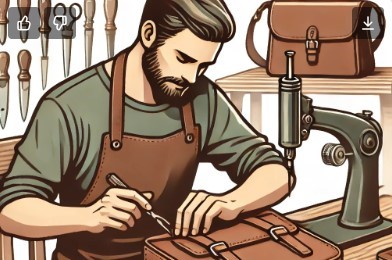Welcome to the era of mindful consumerism, where quality reigns supreme and intentional purchases are the new black. Consumers are embracing a new mantra: less is more. But this isn’t just about decluttering or minimalism. It’s about making deliberate choices that align with their values, their wallets, and their world.
Picture this: You’re standing in a store, eyeing a beautiful leather jacket. It’s not cheap, but it’s well-made and timeless. Next to it hangs a cheaper alternative that’s on-trend but likely won’t last the season. Which do you choose?
Increasingly, consumers are opting for the former. They’re investing in quality pieces that stand the test of time, both in style and durability. This shift towards intentional purchasing is reshaping the retail landscape, forcing brands to up their game or risk being left behind.
But why the change? Several factors are at play:
- Economic savviness: With inflation biting and purse strings tightening, consumers are thinking long-term. They’re realizing that spending more upfront on quality items can save money in the long run.
- Environmental consciousness: The throwaway culture is out. Sustainability is in. Consumers are waking up to the environmental impact of fast fashion and disposable goods.
- Value alignment: People want to support brands that share their values. Whether it’s ethical production, fair labor practices, or eco-friendly materials, consumers are voting with their wallets.
- Experience over stuff: There’s a growing realization that happiness doesn’t come from accumulating things. Instead, people are seeking quality experiences and products that enhance their lives.
How is this trend reflected in customer behavior?
- Customers are doing more research before they buy.
- There is greater interest in timeless pieces that are perceived to transcend trends.
- They consider cost per use. A $200 jacket worn 100 times is better value than a $50 one worn twice.
- They are willing to pay more in areas that matter to them. It’s okay to splurge when it’s important while economizing on less important items.
But defining “quality” isn’t always straightforward. It’s not always about price tags or brand names. The perception of quality can come craftsmanship, the materials used, and the values behind the brand. This presents both a challenge and an opportunity for brands. Those who can authentically deliver on quality and communicate their value proposition effectively will win the hearts (and wallets) of discerning consumers.
What are your customers looking for when it comes to quality? Let’s ask them! Email me at info at bureauwest.com.
Sources: “Here Are The Consumer Behaviors That Will Continue Into 2024.” 5Wpr, 1/15/24; “Conscious Consumer Spending Could Be At A Tipping Point,” Forbes, 11/30/23; “Navigating the Dynamic Retail Landscape,” KNow Research, 1/26/24
